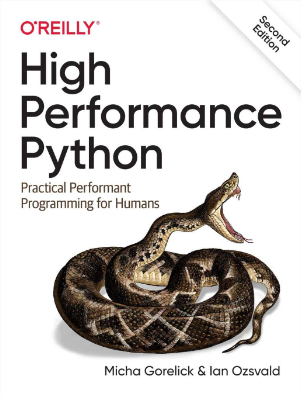Entrepreneurial Geekiness

Upgrading Ubuntu, problems and solutions
I’ve just upgraded my Ubuntu linux distribution from “Hoary Hedgehog” to “Breezy Badger”. I ran into some trouble, I’m pretty sure it was all caused by me running out of disk space during the upgrade. For the record I’ve added the process here to go from a broken upgrade to one that works. I also note how to fix Azureus in Breezy (it needs Sun’s java, not the GNU version).
After following the instructions at UbuntuGuide I saw I had errors. I restarted the machine and noted that nothing had changed (time so far – 3 hours of downloading). I started the process again and left it for another 3 hours.
This time it appeared to work so I restarted – and that’s where it all went south. The reboot got as far as the console before stopping. I ran
sudo apt-get dist-upgrade
again from the console (for 30 minutes) and it got a bit further. I restarted and got stuck again. The software suggested I run
sudo apt-get -f install
and again it got a little further (about an hour), another reboot, another
sudo apt-get dist-upgrade
and now I had a total of 7 errors: postfix, lsb-core, lsb-graphics, lsb-cxx, lsb, mailz, mutt
After this reboot I got to a the Ubuntu graphical log-on screen. Trying to log-in gave me the message "GDM could not write to your authorization file...".
Switching back to the console (Ctrl-Alt-F1) and running
sudo apt-get install
showed that there was a problem with postfix. I used Shift-PgUp and Shift-PgDn to read the messages. Running
sudo postfix stop
stopped the postfix script, and running
sudo apt-get dist-upgrade
again resulted (finally) in all packages installing. It reported that mplayer-k6 and gparted were not upgraded (I don’t know if that’s a problem, they seem to work fine now though).
After rebooting again and trying to log-in, the message had suggested I might be out of disk space, a little digging on-line reveals that this was likely to be the case. Using
df
at the console (I used Ctrl-Alt-F1 to get to a console), I saw that I’d used 100% of my root drive. It seems that apt-get leaves files in the cache, running
sudo apt-get clean
removes about a half-gig of cached files. Switching back to the graphical log-on screen (Ctrl-Alt-F7) and my log-in works.
When I logged in the Language Selector (System->Administrator->Language Selector) asked to upgrade itself, I allowed the defaults and then closed it when finished.
Azureus needed to be fixed, exactly the same problem led to the same solution. I checked
java -version
and saw I had gij v1.4.2. Previously I had Sun’s java, so I ran
sudo update-alternatives --config java
and saw that I had 3 Javas, currently I had /usr/lib/jvm/java-gcj/bin/java, I chose
/usr/lib/j2re1.5-sun/bin/java
and then Azureus worked fine.
Now Ubuntu once again works fine and I’m running the latest version. Next time I’ll make sure I have a gig of free space on my root drive.
Update: My HP LaserJet 1010 printer worked first time. I just plugged it in and used System, Administration, Printing, New Printer, chose the HP LaserJet 1010 and it just worked. Woot! I hadn’t even tried installing it in the previous version of Ubuntu over fears I’d need to mess around with a stack of packages.
Great customer service
Two of my toys blew up last week. My 18 month old 17″ Viewsonic LCD monitor just stopped working and about the same time my 6 month old 512MB Compact Flash camera card died.
I was (pleasantly!) surprised to see that Viewsonic offer a 3 year warranty on all LCD monitors – they just came to my office and did a straight swap. Totally painless. The 512MB card came from Expansys, they replaced the unit in a week. No fuss, no argument – just pain-free customer service. These are good companies.
An evolutionary approach to starting a company
Here’s a nice post by a VC taking a look at two ways of building a new business – either start well-funded by VCs or start as a one-man-band in a garage (or a two-man-band from sofas for Kyran and I).
“We don’t have a preference for one way or the other, but I will say that there is something particularly special about the companies that are created via the evolution approach.
They seem more “authentic”, to borrow a word from David Beisel.”
He frames the point as Intelligent Design vs Darwinian Evolution so the post’s comments get a little interesting.
Grant for Investigating an Innovative Idea
In an earlier post I alluded to a government-awarded grant that Kyran and I had used to evaluate a business idea. I hadn’t applied for a government grant before and it was a bit daunting – perhaps explaining the experience will be of benefit to other UK entrepreneurs.
Back in April I worked with the Sussex Innovation Centre to evaluate an idea dubbed BookAnExpert – a proposed website that would let anyone trade their knowledge with anyone who wanted to buy their time. The idea stemmed from my frustrations when trying to find someone for advice on web-API programming. I was working as a programming consultant in a web start-up and I wanted to buy the time of an experienced eBay API coder to ask a few hours of questions.
There is no website where you can find a rated, reputable person who would sell their time and knowledge by the hour. There are websites (e.g. RentACoder) when you can hire programmers for jobs, but none of these support short-term Q&A sessions. Since the service didn’t exist, I wondered if we should make one.
Mike Herd (Executive Director at the Innovation Centre) suggested we apply for the DTI’s Grant for Investigating an Innovative Idea (more details at Business Link). The scheme offers a grant of 75% of the cost of hiring consultants who can advise on an innovative idea.
The money is refunded retrospectively if the DTI agree that the work is up-to-scratch. This involved some risk as hiring the staff we wanted at SInC would cost several thousand pounds – we judged that the opportunity to learn and network would be worth far more than the risk of not receiving the refund.
Paul Jordan acted as mentor and a financial guide over the following months and Melanie Page provided market research and evaluation advice. Over the course of several months I learned a lot from my involvement with SInC – they helped shape our idea and and our approach to testing the market.
Ultimately I saw that the idea was unlikely to succeed – the pool of expertise required would take far too long (and probably cost a lot) to build. Before undertaking the grant I believed that we’d figure a way of making it work – possibly we’d have been in for an expensive lesson had we gone ahead with the site. The DTI were understanding – it seems a lot of ideas are canned or changed after one of these Grants. They liked the work and the refund was paid within a month.
In hindsight, was it worth it? I’d say yes – personally I learned a lot of new skills (principally to do with financial and market analysis) and the experience has shaped our thinking towards our new idea – ShowMeDo. I’ll talk more about that over the coming weeks.
I’d like to recommend the Sussex Innovation Centre to any entrepreneurs within reach of Brighton and thank Mike, Paul and Melanie for their help both during and since the Grant.
Review: Beginning Python: From Novice to Professional
I highly recommend Beginning Python: From Novice to Professional to anyone looking to learn or improve their Python programming ability. I recommended this to a colleague who had a lot of programming knowledge (in old Microsoft QuickBasic, would you believe) but no experience of Java, C++, Python.
Within a few days he was comfortably doing difficult math calculations (he’s a physics researcher), plotting data, using all the intrinsic functions and editing using IDEs (so, my evangelical mission of conversion was accomplished). This book is only a few months old and is written for the latest major Python version – 2.4.
A few days later I noticed an odd thing – I found myself using the same book for reference. I’ve been using Python for 3 years, I’m a very strong programmer in various modern languages and I use Python in a Nutshell (aimed at Python 2.2) and the Cookbook (I think Python 2.2 as well, though there’s a 2005 edition now), and here I am using a ‘beginners’ manual.
And there’s the crunch – this is a powerful book – it addresses all the basic needs and then runs on through to complicated problems with worked examples, from web scraping, drawing, games, databases and more. In short, this book is brilliant and I probably ought to buy myself a copy. If you want to code in Python then I strongly recommend that you get this book.
Read my book

Oreilly High Performance Python by Micha Gorelick & Ian Ozsvald AI Consulting
Co-organiser
Trending Now
1Upcoming discussion calls for Team Structure and Buidling a Backlog for data science leadsData science, pydata, Python2My first commit to PandasPython3Skinny Pandas Riding on a Rocket at PyDataGlobal 2020Data science, pydata, Python4“Making Pandas Fly” at EuroPython 2020High Performance Python Book, pydata, Python5Weekish notesData science, Python, Week notesTags
Aim Api Artificial Intelligence Blog Brighton Conferences Cookbook Demo Ebook Email Emily Face Detection Few Days Google High Performance Iphone Kyran Laptop Linux London Lt Map Natural Language Processing Nbsp Nltk Numpy Optical Character Recognition Pycon Python Python Mailing Python Tutorial Robots Running Santiago Seb Skiff Slides Startups Tweet Tweets Twitter Ubuntu Ups Vimeo Wikipedia


